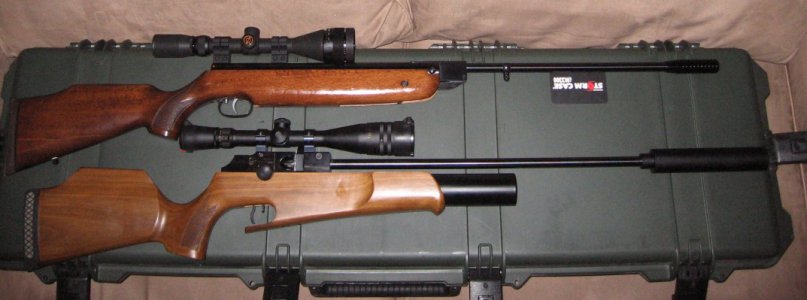I agree. the springer was reported to be he most accurate and consistent type of air gun in the reprinted 1950's "Encyclopedia of Air Guns"(or some re arrangement of those words. Things may have changed. I sort of prefer to "Pay as I go" and pump the barrel once per shot.
True,though,the most expensive target air guns are CO2 types. I understand you waste the first several shots,then there is a consistent 900 PSI yield for a good number of subsequent shots. I shot those type guns many years ago(not the Olympic quality ones!) But,none will deliver the power of a good spring air. Plus,if you want a quieter gun,CO2 and pump ups are noisier. not that I mind a nice POP!! It is now LEGAL in Va. to shoot air guns in your yard with a good backstop. So,noise doesn't matter.
Even many,many years ago,a Greener break barrel delivered quite respectable velocity that exceeded pump up types. I think they did 900 FPS,but it has been a long while since I read the book. I have the 1927 Webley service spring air,and 2 BSA patent date 1907 rifles. One in .117 and a larger version in .22 caliber. These will all deliver more power than a pump up or a CO2 gun. And,man,are they built. No sheet metal at all. Even there cocking levers of the BSA's are milled from solid steel. The Webley receivers were milled from a solid billet of steel,air cylinder and all,according to my old book. Their pistons have automotive type piston rings,which makes their small cylinders more efficient. They always cost more,but they were made with actual fire arms quality. A couple of scientists hunting rare bird specimens(to stuff) in the Amazon in the 20's said that Webleys were the only air guns they could always trust in that climate.
Sam,your mention of smooth bores with the last portion being rifled is not a new concept. That was used in the early 20th. C.(or possibly late 19th. C.) in some African large bore rifles. It was patented and called "Paradox" rifling. I am not certain what the benefit was. Possibly higher velocity due to less friction from a fully rifled barrel. The reason they used very large caliber rifles was they didn't have the super high velocities back then. Once,at a gun show,I handled a FLINTLOCK bi game rifle. It must have been 20 MM!! No kidding!! The barrel was much oversized compared to a normal gun. For some reason,the rifle was not real long. Since black powder burns more slowly than smokeless in a gun barrel(hard to believe),barrels were made longer to burn more of it.


